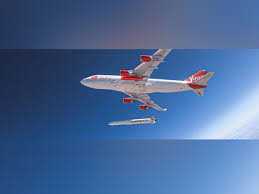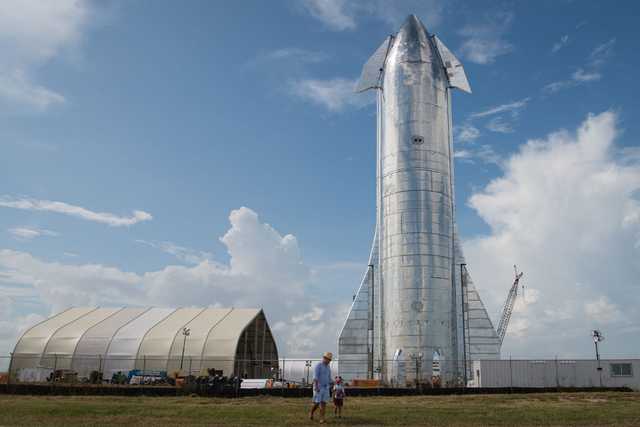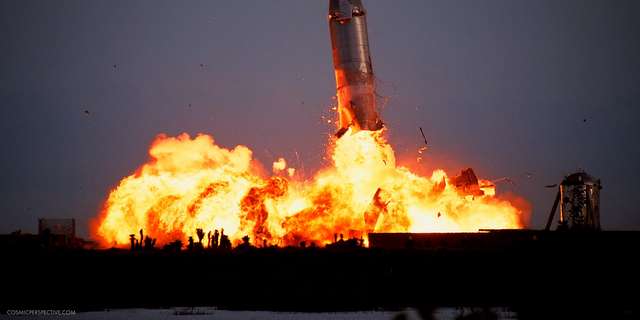
There was groans of disappointment from an excited and expectant crowd of more than 2,000 spectators and VIPs, who had gathered at Newquay’s Cornwall Airport to witness the first ever satellite mission launched from UK soil, when news came through that the historic mission had failed.
The rocket being carried by a specially adapted jumbo jet, was successfully launched from the aircraft Cosmic Girl, but Virgin Orbit, the company behind the mission, announced that there had been an “anomaly” meaning that the nine satellites that the rocket was to release, had been lost.
An investigation as to what precisely had gone wrong will start immediately. The jet carrying the rocket returned safely to its take off site around 50 minutes after release, whilst the rocket and the satellites onboard reportedly burned up in the atmosphere.
Everything going well in early stages
Initially all seemed well, with the jet Cosmic Girl thundering into take off to loud cheers, more or less right on schedule. Members of the public were informed that within 60 seconds of igniting, the rocket would be visible from not only the UK, but also on coastal spots in France, Portugal and Spain too.
Rocket released as planned
Still on schedule, pilot Mathew “Stanny” Stannard and his co-pilot Eric Bippert took the aircraft on its planned course, firstly aiming towards Ireland before turning southwards, and the message was heard from mission control to: “release, release, release”, prompting the pressing of the red button in the cockpit, to activate the instruction.
The LauncherOne rocket fell away from the wing before around 4 seconds later, its engines ignited and it began its journey onwards and upwards.
LauncherOne ascends correctly
That sudden departure of 25 tonnes had the effect of causing Cosmic Girl to bank hard away from the ignition. All seemed well as the rocket ascended correctly and accelerated towards its required velocity, at which point the satellites would be ejected and be in orbit around the Earth.
“Anomaly” reported
Then at around 11.45pm Virgin Orbit who were monitoring every second of LauncherOne’s progress announced that it had suffered an “anomaly” whilst travelling at 11,000mph (17,700km/h), just short of its final orbit.
It released a tweet which read: “We appear to have an anomaly that has prevented us from reaching orbit, and we are evaluating the information.” The crowd back at the airport in Cornwall were naturally left flat at the anti-climax, and as such could only raise muted applause for the returning Cosmic Girl jet, as it touched down several minutes later.
CEO promises to return to orbit as soon as possible
Dan Hart, the CEO of Virgin Orbit was apologetic, acknowledging that they had failed to provide their customers with the launch service that they deserved. He added that the first-time nature of the mission created layers of complexity which had been overcome; but it appeared to be a technical failure which had prevented achieving the final orbit.
He undertook to work tirelessly to understand the nature of the failure, make corrective actions, and return to orbit as soon as the investigation and mission assurance process was complete.
Ian Annett, Deputy CEO of the UK Space Agency, pointed out that the failure showed just how difficult getting into orbit actually is; but was quick to add that further launches within the next 12 months could confidently be predicted.
Could not reach the required orbit
The agency’s launch programme director, Matt Archer, suggested that the issue occurred in the upper segment of the rocket, observing that the second-stage engine had a technical anomaly and did not reach the required orbit, which he declared would be part of a thorough investigation by Virgin Orbit and a number of government departments. He added: “We will dust ourselves off and go again, because that is what space is about.”
Spaceport head “gutted” but proud of her team
A bitterly disappointed and emotional Melissa Thorpe, the head of Spaceport, who successfully won the bid to stage the launch and who had spoken so enthusiastically just hours before, said that it was “absolutely gutting”.
She was though pleased with how Spaceport had performed and the potential for the UK space industry was there for all to see. “The airport was amazing, and the operational side of things went completely to plan” was her immediate reaction. She added: “We put so much into this, everybody has and we are like a big family, so that is a huge win to show that we can do it here”.
Highly sophisticated satellites
The actual satellites were insured so their manufacturers and operators will be compensated. These included some incredibly technical and sophisticated creations, such as:
The Coordinated Ionospheric Reconstruction CubeSat Experiment (CIRCE) which was a pair of satellites carrying “space weather” sensors which would examine interactions between energetic particles and magnetic fields emitted from the Sun.
ForgeStar-0 which was the first ever Welsh satellite that was to test key technologies for an eventual constellation of mini-factories that would fabricate novel materials in space.
IOD-3 Amber was to listen for the radio transmissions from ships at sea as a way of detecting illegal fishers and smugglers from vessels not directly advertising their position.
Dover was a satellite that could have tested a novel way to provide precise timing information from space. It was to be a pathfinder for another constellation that would provide a back-up to GPS and Galileo.
UK aiming to be major space player
The mission had been billed as a major milestone for UK space, hopefully marking the beginning of a new exciting launch capability. The country sees itself as a genuine global player in the space industry and it is already internationally renowned for designing satellites of all sizes, but has always had to rely on foreign spaceports to actually get them into orbit.
Massive set back
This then is a major set back in their drive towards being a sector able to do everything from first design through to mission operations.





0 Comments